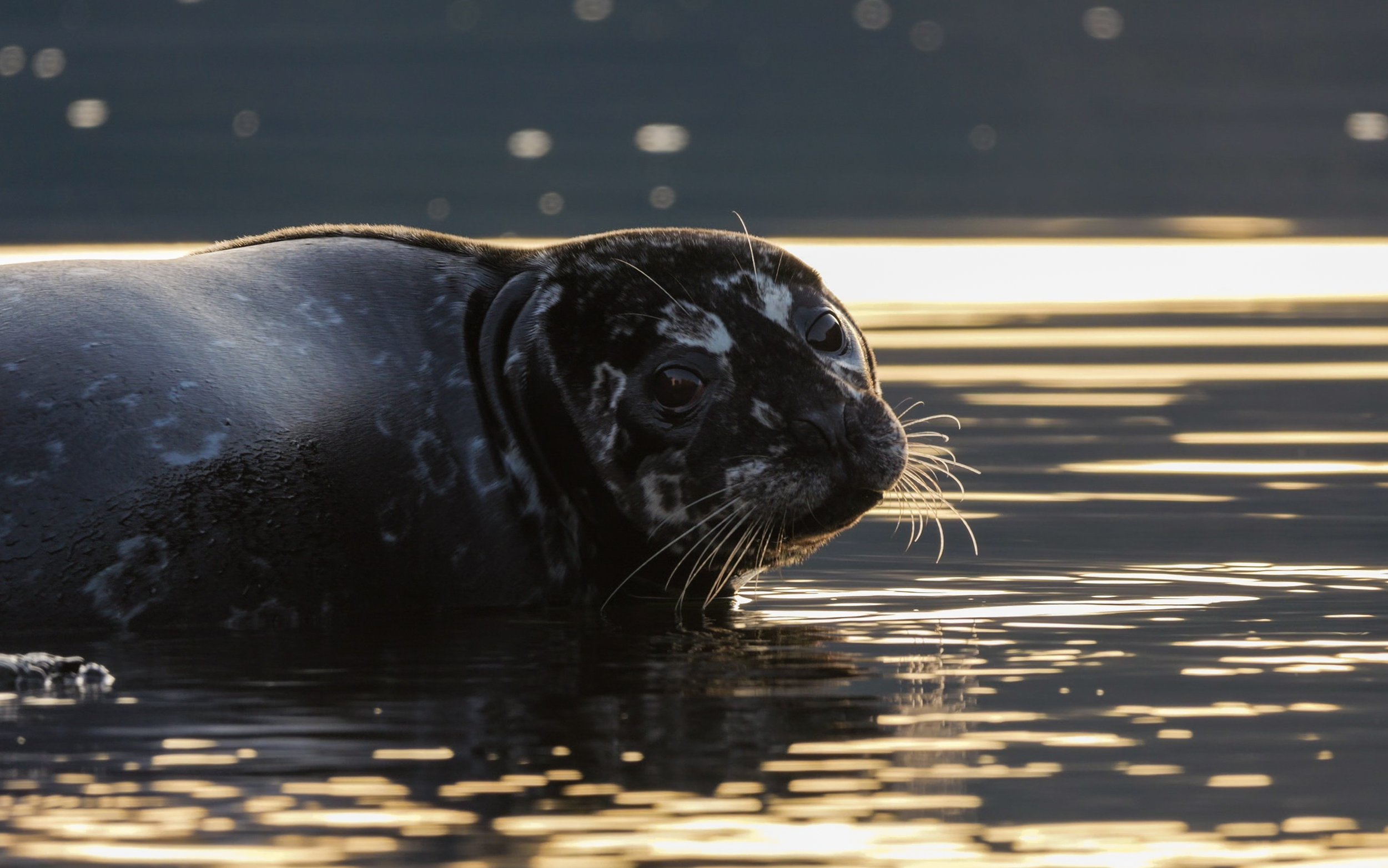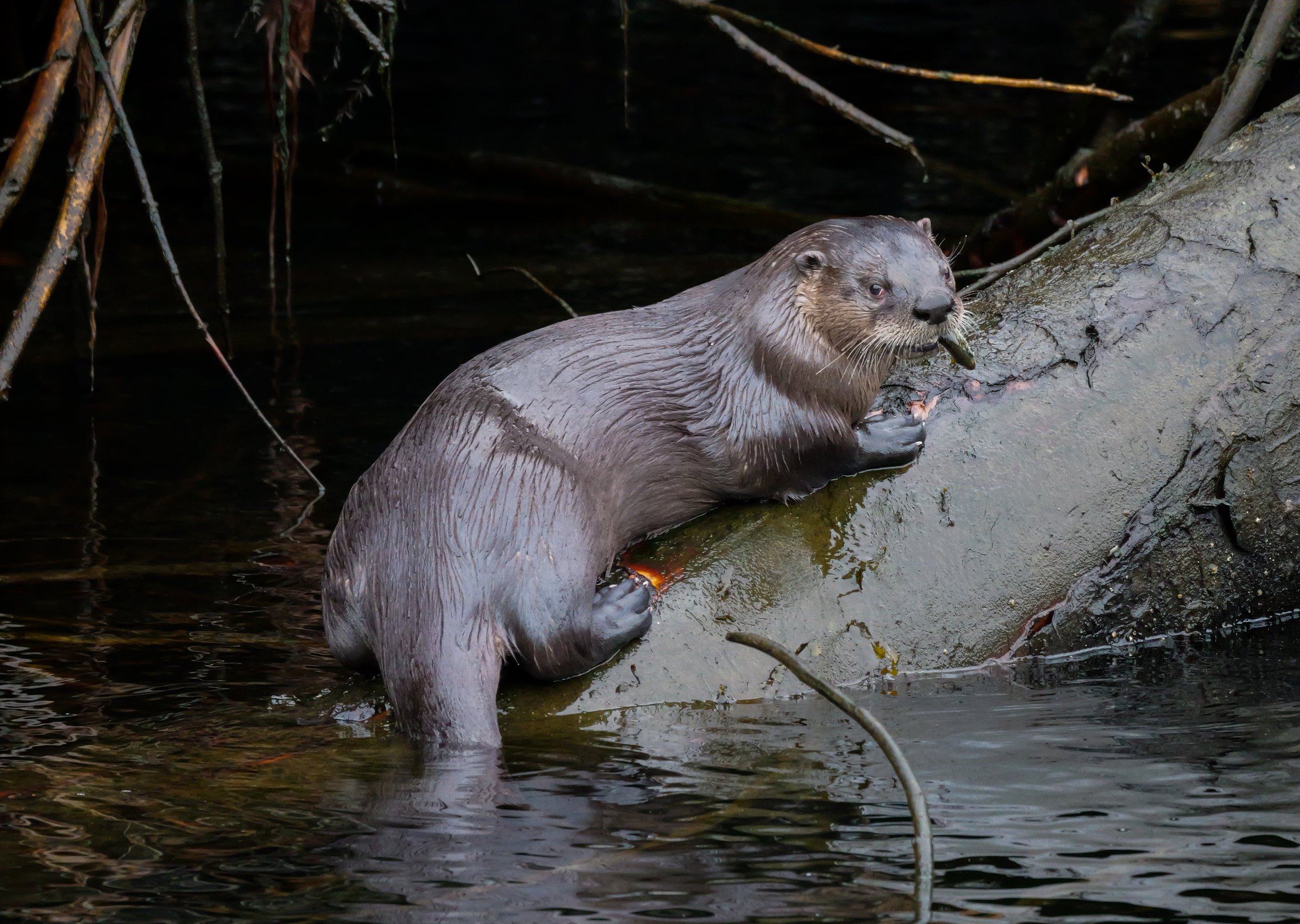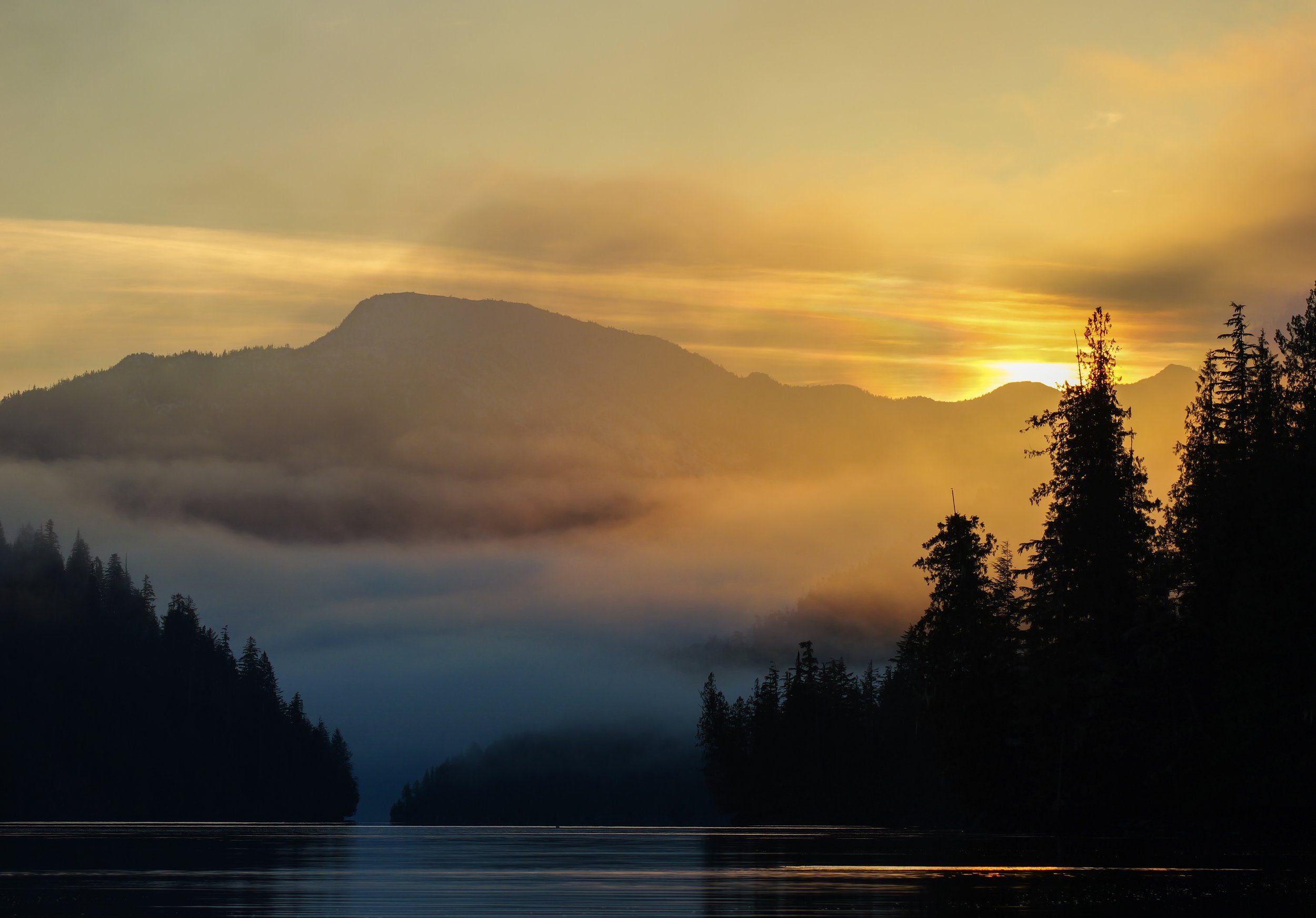In the Presence of Giants
Dispatches from the Great Bear Rainforest
I hear the whales before I see them. Whoooosh! I rush to the edge of the floating dock to look out across the waters of the Neǧiƛ/Nekite Estuary. A blue back rises up like a mountain.
Humpback whales dive for krill at the end of the Smith Inlet on the central coast of British Columbia, traditional territories of the Gwa’sala-‘Nakwaxda’xw First Nations.
The whales surface, their exhaled breath hanging in the air, moisture particles suspended like clouds of gold dust. They glide along the face of the waters. It’s like seeing the tip of an iceberg. I imagine what the eye cannot see. The body of a humpback whale can run the length of a city bus.
I’m working as the winter caretaker at the Great Bear Lodge, a floating lodge at the mouth of the Neǧiƛ/Nekite Estuary, living alone with my dogs and working on my book about black bears. For six weeks, the humpbacks frequent the waters adjacent to the lodge.
Every day, I break from my writing to go photograph them as they surface and dive. The underside of their flukes are like individual thumbprints: patterns of unique scars and barnacles allow scientists to identify individual whales. I contribute the photographs to the Marine Education and Research Society (MERS), a non-profit in Port McNeill, BC, dedicated to research and advocacy for marine conservation and protection.
“The underside of their flukes are like individual thumbprints: patterns of unique scars and barnacles allow scientists to identify individual whales. “
Jackie Hidlering, an education coordinator with MERS, emails me back at 10 PM on a Sunday evening. “I couldn’t resist taking a look at your photos,” she writes. “And at first glance it was obvious to me that one of the whales is BCX1781, or Rico, as we call him.”
Rico was last documented in 2019 in the same location. “That tells us that humpbacks have strong site fidelity,” she writes. Biologists use the term ‘site fidelity’ to refer to an animal’s preference to return to the same area, or location, at the same time, every year. The same whale sports a strange mark – like a raised fish bone – on its back. A scar from a collision with a boat propeller. “That said, we did not know Rico had been hit by a boat,” writes Jackie.
While numbers of humpback whales have increased in recent years along the BC coast, and worldwide, there are also increasing numbers of vessel strike, or ocean traffic colliding with whales as they surface. Jackie and her team at MERS are leading education campaigns to encourage boaters to hang a red, black, and yellow flag with a fluke symbol on it off their vessels to signal to others: slow down. Whale in the area.
My last sighting of Rico occurs in mid December. A small black fluke tail at the end of the inlet, rising for a few seconds, before disappearing below the surface. Rico and the whales embark on their annual pilgramage to their breeding grounds in Hawa’ii and Mexico.
To learn more about humpback whale conservation, please visit https://www.mersociety.org/







